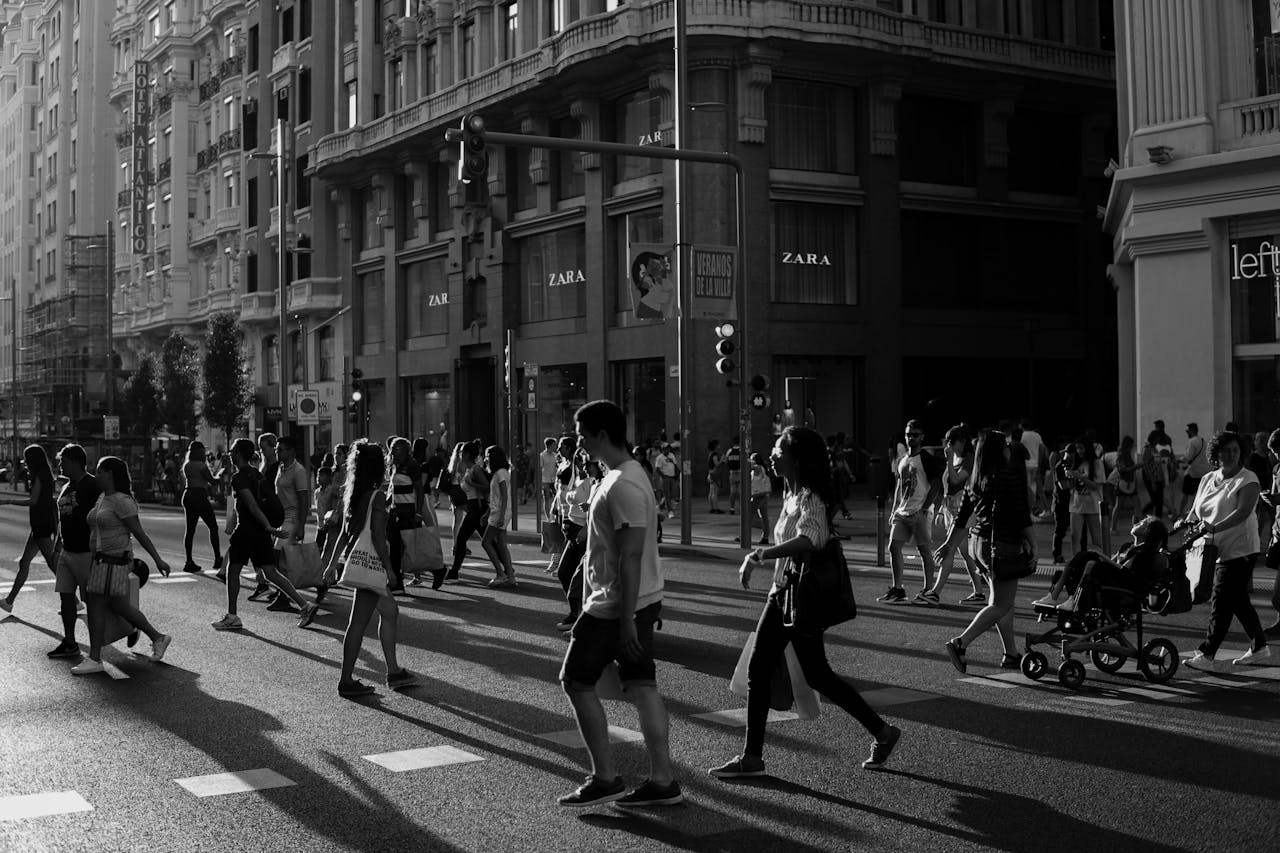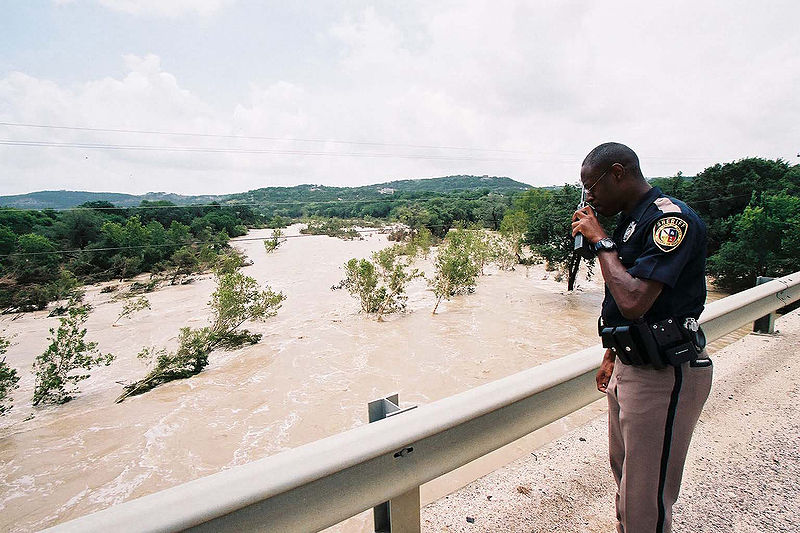Where do Bruce Willis, Mick Jagger, and Tommy Lee go for a perfect getaway? To a luxury resort in the city of c, Texas. While the place may not be as renowned as other cities in the US, don’t let that stop you from a visit.
Nestled in the heart of Texas, the city of Cibolo offers a unique blend of rich history and modern growth. The city’s origins can be traced back to 1883 when it was founded near the serene banks of Cibolo Creek. Initially a small community with simple amenities such as a church, a general store, and a school, Cibolo has transformed dramatically over the centuries. Its growth took a significant turn as it evolved from a humble township into an integral part of the bustling San Antonio-New Braunfels metropolitan area.
Today, Cibolo stands as a testament to Texas’s ability to preserve history while embracing the future. It boasts a charming Main Street that weaves through a historic downtown area, reflecting a fusion of past and present. With a population that has seen substantial increases since the 2000s, the city mirrors the dynamic expansion of the Lone Star State’s suburban landscape. For visitors planning a trip, Cibolo offers an array of cultural landmarks, recreational activities, and invites travelers and residents alike to experience its vibrant community life.
Key Takeaways
- Cibolo, Texas, is a city with deep historical roots and a flourishing present.
- The city’s demographic changes and economic growth reflect broader trends in suburban development in Texas.
- Cibolo offers a variety of cultural experiences and attractions, making it an appealing destination for visitors.
Planning Your Visit
When visiting Cibolo, Texas, travelers can explore a city that harmoniously blends history with a burgeoning growth rate. Maps and visitor information readily assist in navigating this fascinating locale nestled between San Antonio, Schertz, and New Braunfels in south-central Texas.
Visitor Information
Location: Cibolo is conveniently located along FM 78 and FM 1103, with easy access to major interstates I-10 to the south and I-35 to the north.
- Maps: Visitors can obtain maps of the city and surrounding attractions at the local visitor center or online via the city’s official website.
- Contact: For inquiries, the visitor center’s phone number is +1 210-619-1850.
- Address: Prospective visitors can head to 12780 W Schaefer Rd, Cibolo, TX 78108, United States for local insights and information.
Events and Attractions
Cibolo’s growth has led to an increase in its attractions and community events, offering a diverse range of experiences for all ages. Below are some highlighted events and sites in and around this dynamic city:
- Cibolo Nature Center: A prominent attraction for nature enthusiasts showcasing diverse bird species, with the possibility to learn about the center’s origins from The Nature Center Book.
- Historic Downtown: The city’s historical roots can be felt through a stroll in downtown Cibolo, with various buildings outlining the story of its development.
- Annual Events: Visitors should check local listings for annual events that may provide a unique glimpse into the community’s character and traditions.
Luxurious Getaway at Cibolo Creek Ranch
Texas state’s most famous resort lies in the hearty city of Cibolo. It is a luxury compound built inside 19th Century forts. The stone walls and low-lying buildings overlook the desert, and give a feeling of serenity. John Poindexter, a die-hard Texan, is the owner of Cibolo Creek Ranch.
America and the world’s richest personalities love visiting this remote resort for some peace and quiet. You can fly to the resort via private jet and have a great time for $500+ a night. Guests organize bird hunts and fancy parties at the Cibolo Creek. Cibolo Creek Ranch was also the backdrop of Tommy Lee’s Hollywood movie “The Three Burials of Melquiades Estrada”. The resort also hosts members of Royal families from around the world.
Day Picnic at Animal World and Snake Farm

If you have a liking for petting snakes, this is your place. The snake farm houses a variety of these reptiles and other exotic animals. The owners keep the animal farm as a conservatory to protect endangered species of the area. Kids and young adults love visiting the Animal World to see their favorite animals up close. You can also attend petting sessions and individual photo shoots.
Shop at the Cibolo Farmers Market
Cibolo’s best produce comes to this lively Farmers Market. Established in 2014, the market expanded quickly and added more vendors each quarter. You can buy fresh vegetables, pet food as well as gourmet delicacies at the Farmer’s Market. It is also an Artisan’s market now, and crafters from the city display their latest work for sale.
Take a Stroll in the Crescent Bend Nature Park
Crescent Bend Nature Park is the serene, calm place where you will feel closest to nature. Located in the heart of Cibolo, it is one of the main tourist attractions in the city. If you have been to Cibolo and not visited, you have missed out. There is a trail that leads to the Creek, benches scattered around and long walkways in the park. Residents visit the park daily for walking their dogs or jogging. It won’t be wrong to call this place an oasis in the middle of the desert.
Explore Veteran’s Memorial Park
If you’re searching for an area you can enjoy with fellow backpackers or friends, this is the ideal area to explore. There are many jungle cards, gyms, swings, and many other things to do here. The park also has a beautiful trail where people can walk in the morning. Also, benches are strategically placed throughout the park to help visitors relax and enjoy the beauty of the place.
With its strategic location near San Antonio, New Braunfels, and Schertz, Cibolo serves as a perfect day trip or a convenient base for exploring the Texan heartland.
Geographical Setting
Cibolo, Texas boasts a unique geographical setting that stretches across Guadalupe and Bexar counties, within the larger San Antonio-New Braunfels metropolitan statistical area.
From Cibolo Creek to City Boundaries
Cibolo Creek is an integral part of the city’s formation and its history interwoven with the development of the area. The creek has been a focal point around which the community grew, providing a natural resource for inhabitants since before the City of Cibolo’s official establishment.
Cibolo’s city boundaries encompass a diverse landscape that is emblematic of the Texas Hill Country and the South Texas Plains. The city itself is situated in close proximity to San Antonio, allowing it for rapid growth due to suburban expansion. The boundaries that define Cibolo today are a testament to its evolution from a small community to a bustling city.
It sits within the Cibolo Valley, an area of historical importance and striking natural beauty. The valley has been pivotal in the city’s expansion and has influenced much of Cibolo’s modern infrastructure and residential development.
While historically considered a rural area, Cibolo has experienced notable population growth. It claims a strategic position within Texas, serving as a corridor between the state’s rural past and its ever-expanding suburban future, connecting to bustling centers like San Antonio while retaining its unique character shaped by Guadalupe and Bexar counties.
The city’s fast-growing nature and geographical mix of the Texas landscape are key elements that continue to attract residents and visitors alike.
Early History and Development
The early history of Cibolo is marked by a rich Native American heritage, subsequent European settlement, and the transformative events leading to the establishment of a community.
Native American Roots
Before the arrival of European settlers, Cibolo Creek’s environs were a favored area for various Indian tribes. Notably, the Wichita, Karankawa, Caddo, Lipan, and Tonkewa tribes utilized the lush grassy banks for their encampments, particularly during the summer months. The creek’s resource-rich environment supported their needs for water, food, and shelter.
European Settlement
With the arrival of Europeans, notably the Spanish, came the expeditions that would alter the landscape. The area was originally explored and mapped by the Spanish, and Cibolo Creek was known as “Rio Cibolo” to Mexico’s cartographers. Travelers and settlers began using the creek as a notable landmark and crossing point.
The Birth of a Community
Colonization further took root in the mid-19th century. Jacob Schlather is recognized as one of Cibolo’s earliest settlers, obtaining land in 1867, and was soon followed by figures such as Charles Fromme and George Schlather. These settlers and others began establishing a community that would eventually evolve into the city known as Cibolo today. The development of roads and bridges facilitated safer and more efficient travel, promoting the area’s growth. The community was poised for further expansion with Texas’ incorporation as a state and the promise of new infrastructure.
Significant Growth and Economy

Cibolo, Texas, has transitioned from its humble agricultural roots to a vibrant community bolstered by strategic transportation connections and modern economic initiatives.
Agricultural Beginnings
The initial growth phase of Cibolo is deeply rooted in its agricultural foundations. Settlers were attracted to the area for its rich, fertile soil, suitable for cultivating cotton, corn, and oats. These crops were the economic mainstays that supported the early community and laid the groundwork for future development.
Railroads and Expansion
The arrival of the Galveston, Harrisburg and San Antonio Railway, later part of the Southern Pacific Railroad, marked a significant turning point for Cibolo. It catalyzed expansion and further growth as it connected the state through a network of rails that facilitated trade and movement.
- Year of Arrival: The railway reached Cibolo in the latter part of the 19th century.
- Impact: Improved access to markets and resources.
Modern Economic Development
The modern economy of Cibolo has been influenced by two major factors: the proximity to Randolph Air Force Base and the integration with major interstate highways I-35 and I-10. This strategic location stimulated economic development and population growth, which has been significant from the 2000s onward.
- Proximity to Major Cities: Cibolo’s proximity to San Antonio provides residents with access to urban amenities while maintaining a smaller-town feel.
- Transportation Corridors: Interstate Highway 35 and Interstate 10 have been crucial for Cibolo’s economic diversification and access to wider markets.
- Population Increase: U.S. Census data reflects a considerable population surge, which has been a catalyst for continued economic opportunities.
Demographics and Society
Cibolo, Texas, has experienced notable population growth over recent years, reflecting its evolving demographics and the development of diverse communities within the city.
Population Change and Diverse Communities

In 2020, the U.S. Census recorded Cibolo’s population at 32,276, indicating a significant increase from the 15,349 residents reported in 2010. The city’s ongoing growth trajectory is underscored by estimates suggesting a 2024 population of 36,796, marking an approximate 12.07% increase since the last census. The burgeoning community is characterized by both long-term residents and newcomers drawn to the area’s amenities and opportunities.
Household dynamics in Cibolo also reflect the city’s economic prosperity, with average household income reported at $124,699 in 2024, up from $106,654 in 2021, which had increased from $102,109 the previous year. The poverty rate in Cibolo stands at a low 3.68%, reinforcing the city’s economic stability.
Cibolo’s households mirror the diversity of its residents, with a variety of cultural backgrounds contributing to the city’s rich social fabric. This diversity is also visible in community events and institutions, which celebrate the myriad of cultural influences that shape Cibolo’s identity.
The city’s population dynamics and diverse communities are integral to understanding the social landscape of Cibolo, where growth and inclusivity continue to be defining features.
Cibolo’s Infrastructure
Cibolo has developed a strong infrastructure that supports its community’s educational needs, provides robust transportation networks, and offers diverse parks and recreational facilities.
Education and Schools

Cibolo places a high emphasis on education, serving its residents with various educational institutions. Notably, Byron P. Steele High School is a central educational hub, preparing young adults for future endeavors. The city’s schools system includes:
- Elementary Schools
- Schlather Elementary
- Middle Schools
- High Schools
Transportation Networks
Efficient transportation is a cornerstone of Cibolo’s infrastructure. Farm Road 78 and FM 1103 are crucial thoroughfares that facilitate movement in and out of the city. These roads connect Cibolo to neighboring areas and are paralleled by two major interstates, fostering accessible commuting:
- FM 78: Links the city to the San Antonio metropolitan area.
- FM 1103: Connects the northern and southern parts of Cibolo.
Parks and Recreation
Cibolo’s parks and recreation venues offer residents a range of activities in settings such as Crescent Bend Nature Park and Al Rich Park. Parks within this Texan city include:
- Crescent Bend Nature Park: A natural habitat offering trails and bird-watching.
- Al Rich Park: Provides sports facilities and playgrounds for family-friendly recreation.
- Additional local parks for community engagement.
Cultural Heritage and Landmarks
Cibolo, Texas, is steeped in rich cultural history that is reflected in its historic sites and community landmarks, telling the story of its diverse heritage and resilience over the years.
Historic Sites
Cibolo Alt Stadt District
- Once a gathering place for German settlers, the Cibolo Alt Stadt District remains a vibrant tribute to the city’s cultural heritage.
O. Henry’s Inspiration
- The city’s charm is captured in O. Henry’s story “The Smiling Valley of the Cibolo,” highlighting its picturesque landscapes and historical significance.
Local Government and Civic Life
The City of Cibolo operates as an independent township, ensuring local governance is tailored to the needs of its residents. The administration prioritizes efficient delivery of city services and engagement with civic life.
City Administration and Services
The City of Cibolo is managed by a city council, which is responsible for making policy decisions that affect the local community. The council is overseen by a mayor, who acts as the executive officer. Key services provided by the city administration include public safety, city planning, and maintenance of public spaces.
The city’s administration maintains various departments, each focusing on different aspects of public service and community welfare:
- Public Safety: Ensures the protection of citizens through law enforcement and emergency response services.
- Public Works: Manages infrastructure, including road maintenance and waste management.
- Parks and Recreation: Develops and maintains city parks, providing recreational opportunities for residents.
- Planning and Zoning: Oversees land use and development within the city to ensure responsible growth and sustainability.
The City of Cibolo also encourages citizen involvement through various boards and commissions that allow residents to have a voice in local government operations. Non-profit organizations operate alongside the city, often providing specialized services and community programs that complement municipal efforts.
Voted One Of the Best Places to Live
In 2011, CNN Magazine ranked Cibolo in its list of “top 100 best places to live” in America. Movoto also ranked Cibolo in 10 most affordable suburbs of America. These stats are signs of Cibolo’s positive growth and potential to develop into the next big city in the state.
Frequently Asked Questions
This section addresses common inquiries about the history, attractions, geography, pronunciation, livability, and natural features of Cibolo, Texas.
What are the historical origins of Cibolo, Texas?
Cibolo’s history dates back to when a post office was established in the area in 1883. Over time, it grew to include a church, a cotton gin, and a general store, serving a small but thriving community.
What landmarks and attractions can visitors find in Cibolo?
Visitors to Cibolo can explore the Cibolo Nature Center, known for its beautiful nature trails and educational programs. The city also hosts a weekly farmers market, offering local produce and goods.
In which county is Cibolo, Texas located?
Cibolo is situated within Guadalupe County, in the western part of the county, and expands into Bexar County, playing an important role in the development of South Texas.
How do you pronounce ‘Cibolo’ and does it have a special meaning?
‘Cibolo’ is pronounced as [see-boh-loh]. The name is of Native American origin, likely from the Tonkawa language, and is believed to refer to the buffalo that once roamed the region.
What are the reasons Cibolo, Texas is considered a good place to live?
Cibolo is considered a good place to live due to its small-town charm, proximity to major cities like San Antonio, and strong sense of community. Its growth is marked by an increasing population and the expanding facilities and services available to residents.
Can you describe the nature trails available at the Cibolo Nature Center?
The Cibolo Nature Center features several nature trails that traverse diverse habitats, including marshlands, prairie, woodlands, and creek-side areas. These trails are open for exploration and offer opportunities for wildlife observation and nature study.
Conclusion
Tourists, the best time to visit the city of Cibolo is from March till November. The weather is ideal for a summer vacation with family or friends. It rains every month in Cibolo, so you must go prepared for the oceanic climate of this area. Going to San Antonio or Austin? Then you can definitely plan a visit over in Cibolo.



